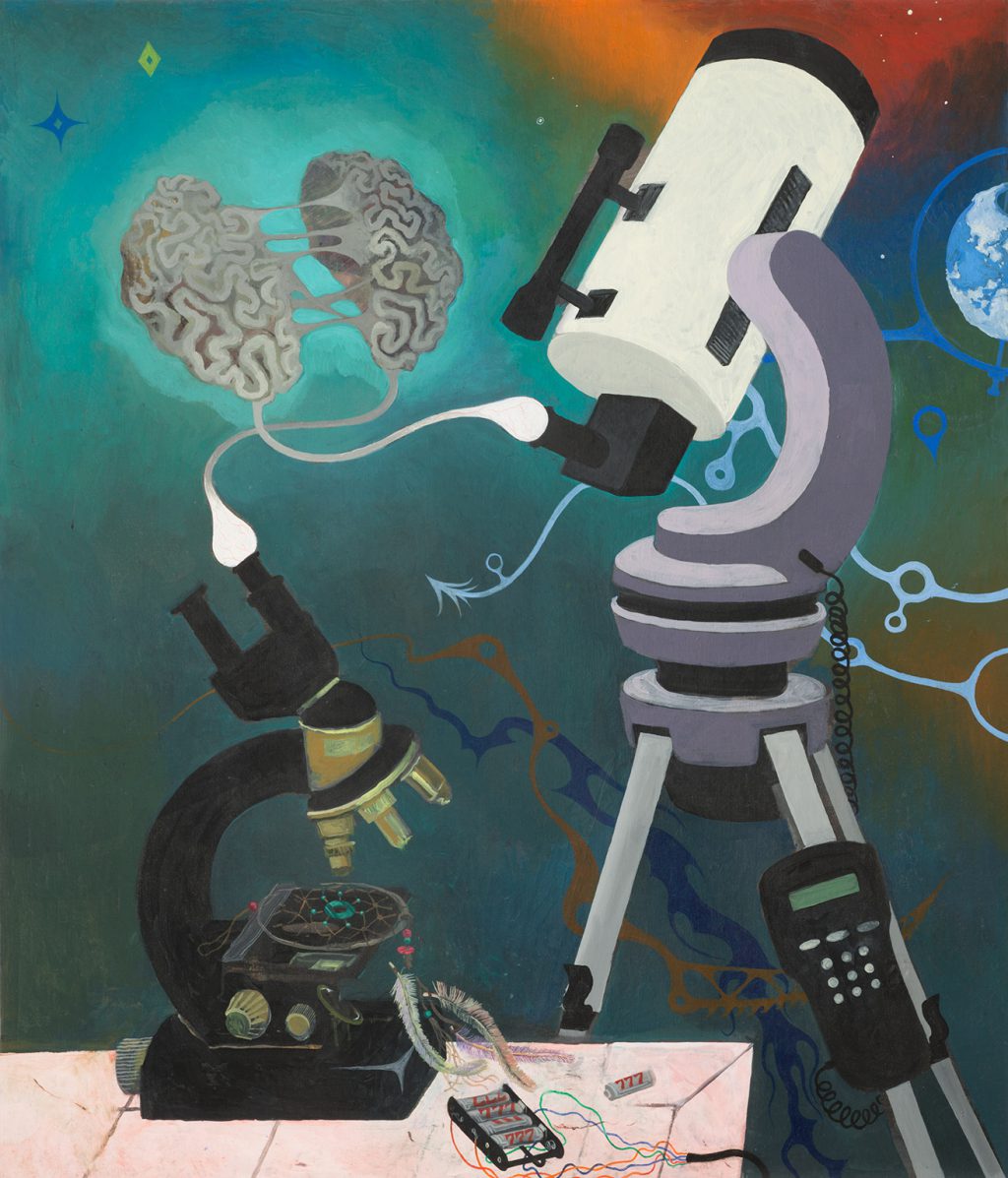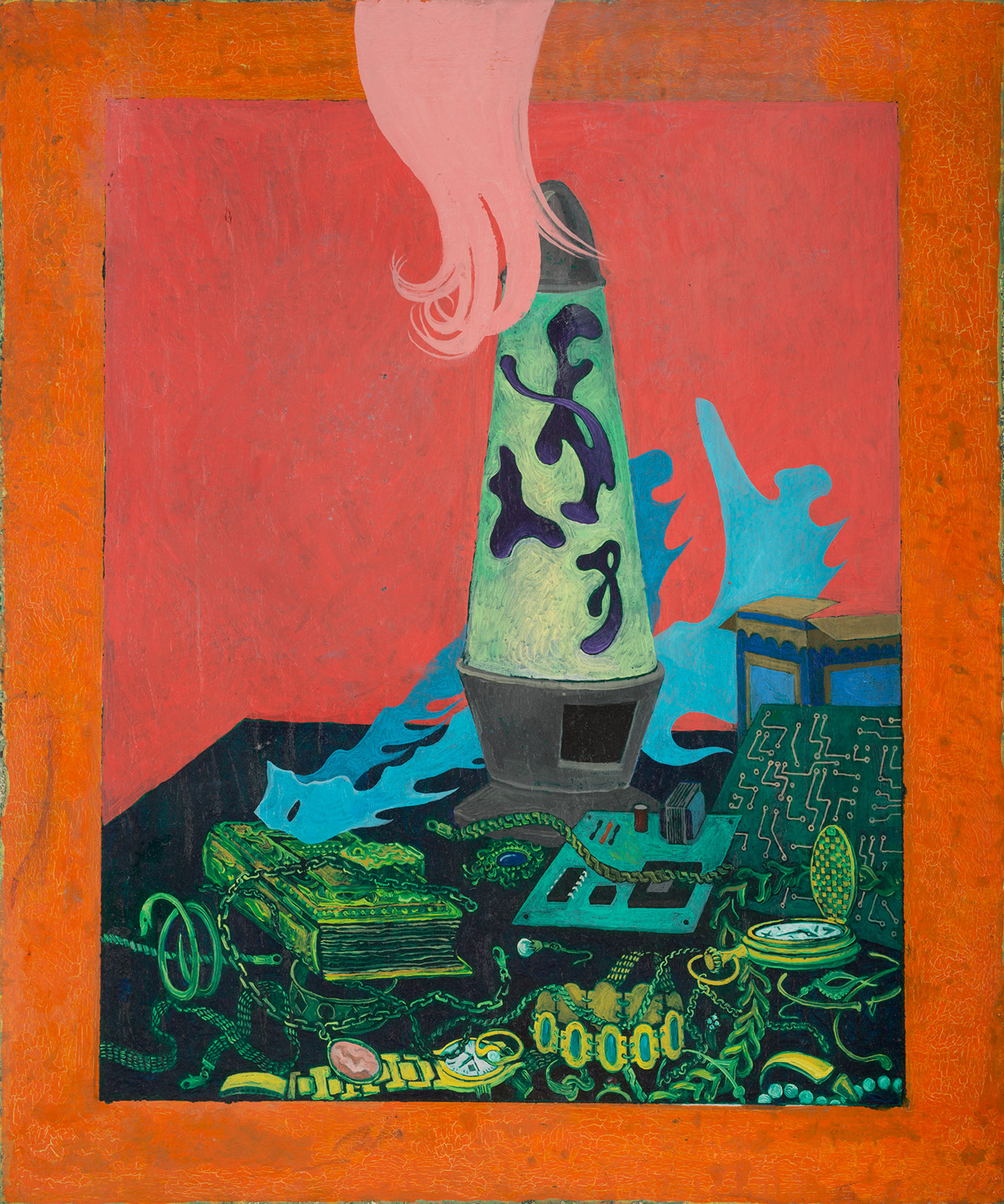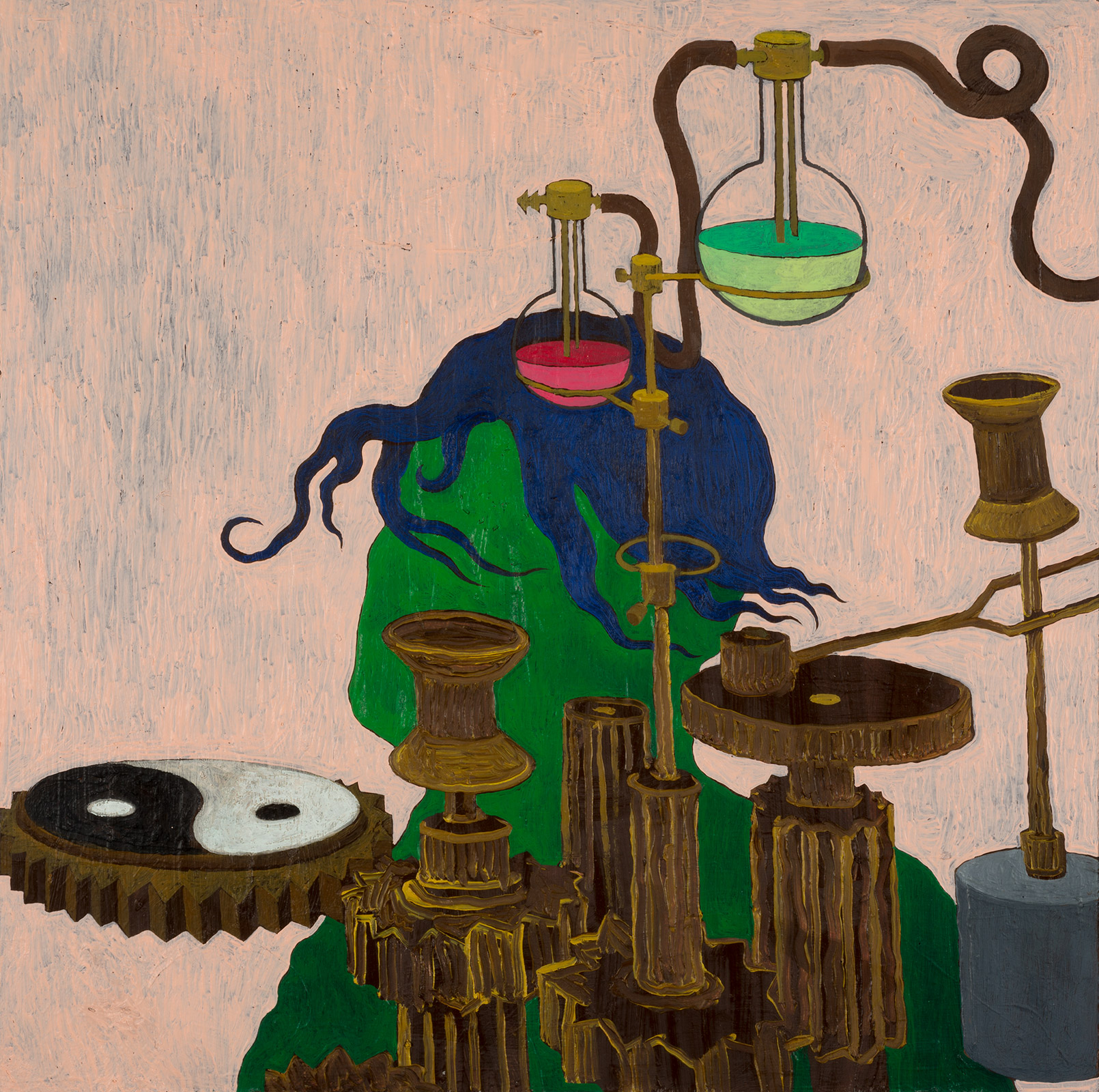Mi Kafchin
Self-Fulfilling Prophecy
Works

Fountain of Youth
2016
Oil on canvas
88 × 139 cm

Black and White Danube
2016
Oil on honeycomb board
56.5 × 44.2 cm

Fishing for Your Zodiac
2016
Oil on canvas
196 × 190 cm

Between Micro and Macro
2016
Oil on canvas, mounted on wood
115 × 98.8 cm

Hungry Time
2016
Oil on canvas
99 × 185 cm

Hell Fueled by Thoughts
2016
Oil on canvas
76 × 60 cm


The Ancient Part of My Brain
2016
Oil on wood
49.7 × 59.7 cm

The Lower Jaw
2016
Oil on burlap
72.5 × 60 cm

The Things in My Head
2016
Oil on wood
41.9 × 29.7 cm

Fishing for Souls
2016
Oil on canvas
67 × 66.5 cm

The Self-Sufficient Plant
2016
Oil on canvas
181 × 126 cm

Trying to Be Beautiful
2016
Oil on canvas, mounted on wood
78 × 42.5 cm

The Tempest
2016
Oil on wood
24.6 × 31.9 cm

With the Help of Mendeleev
2016
Oil on wood
50.2 × 50.1 cm

Cloud of Life
2016
Oil on canvas
80.3 × 84.1 cm

The Position of Venus
2016
Oil on canvas, mounted on wood
40.3 × 36.2 cm

Bozzetto
2016
Terracotta
26 × 27 × 25 cm

Cooking for A.
2016
Terracotta
26 × 23 × 18 cm

Maxim and Me
2016
Terracotta
37.5 × 23 × 14 cm

A Self-Fulfilling Prophecy
2016
Oil on canvas
229 × 187 cm
Text
Around ten years ago, a group of young Romanian artists, known as the “Cluj Connection”, took the international art world by storm. They all shared a profound technical training and far-reaching systems of reference in art history. As an assistant of the painter Adrian Ghenie, Mi Kafchin (b. 1986) came to this loosely knit group shortly after finishing her studies. Her technical and thematic enjoyment of experimentation distinguished her from her fellow artists in the group. She took on a broad spectrum of artistic means of expression, stretching from drawing and painting to sculpture and expansive installations. At the same time, she developed a canon of motifs rich in contrasts that reflects the collage-like visual worlds of our media age like a kaleidoscope: this fusion of art history and quotations from popular culture resulted in a tension-filled visual program. Recently her range of issues has undergone an autobiographical expansion. Mi Kafchin, who grew up in a male body under the name Mihuț Boșcu Kafchin and over the past several months has been undergoing the process of sex reassignment, has now integrated her own and other constructions of gender and identity into her work. With hormone therapy, Kafchin’s color perception has also changed: she has left behind the broken colors of past creative periods and now embraces a vibrant palette.
With the works being shown at her first solo exhibition at Galerie Judin, all created in 2016, Kafchin has undertaken an autobiographical search for traces, beginning with her childhood and youth in Romania, which she stages as an age completely cut off from the present. While Black and White Danube points out to sculptures in public space as the stimulus for her artistic career, Fishing for Souls and Purple Rain depict a Romanian society shaped by orthodox belief and occultism. Turning away from these social repressions, Kafchin sought stability in the heroes of art history, which she associated with her own search for completion. Kafchin has now transposed her inner turmoil of that time into allegorical motifs that initially seem like Dutch sea pieces or scenes from Christian iconography. The painting Hell Fueled by Thoughts, which borrows from representations of purgatory, articulates in a comprehensive painterly way how Kafchin’s mental self-reflection took on self-destructive traits.
Continue reading
With works like The Tempest and Me As Phantom Ship,Kafchin achieved a compelling allegorical visual program for her inner and outer exigencies. She also did not shy away from explicitly visualizing the torment she felt trapped in the wrong body.
Kafchin’s reflection on her transformation process opens with Afraid of Dying, which still presents a male torso surrounded by scaffolding. The works Franzl, The Fifth Element and With the Help of Mendeleev all assemble the arsenal of the necessary medication. Packed with symbols, these and other works mark the start of a new world order. As in Fishing for Your Zodiac, Kafchin chose astronomical coordinate systems and the Zodiac as symbolic of her own repositioning in time and space. The painting Trying to Be Beautiful shows just how painful the process can be. A green dragon emblematizes the discrepancy between inner and outer appearances. With powder and a jewelry case, this figure tries in vain to meet the female ideal of beauty, but due to his size, he can’t even look properly into the mirror. The figure of the dragon is one of numerous symbols that Kafchin has chosen for her own process of transformation. They come from Romanian fairy tales and European art history. For example, Kafchin took up the representation of the Fountain of Youth, popular in the works of the Old Masters, as a traditional emblem of ideals of beauty, transience, and processes of transformation. But Kafchin’s Fountain of Youth not only depicts the expected external transformation. The much more important transformation is alluded to with the three fish placed on the left margin of the image: this is a reference to species of fish that are able to change their gender under certain conditions. Kafchin’s other fountain motif, Divine Pipes, leaves out such transformations entirely; by studying the construction of the fountain, it asks about its prerequisites. Where does the water come from and when does its efficacy begin? Kafchin’s fountain motif thus combines the natural and medical-technical requirements of her own sex reassignment metaphorically.
The thematic trio of beauty, change, and fleetingness runs like a thread throughout Kafchin’s oeuvre, often culminating in vanitas motifs. Hungry Time, for example, presents time personified, devouring not just a breakfast egg but an entire planet. The painting The Death of Toma,which arranges rubble in a surreal state of uncertainty against a nearly monochromatic backdrop, is in turn dedicated to the Romanian actor Toma Caragiu, who died at the pinnacle of his career in an earthquake.
In her most recent works, Kafchin has given form to her own fears and hopes in a courageous and touching way, but also abstracted them as foundational questions about our human existence. These works open a debate about the artist’s own ideals, contradictions, and processes of transformation. The artist formulated the goal of her own transformation in a small group of terracotta sculptures. Bozetto, for example, presents a cave-like, magnificent head of female hair as a site of refuge. The longed for balance between inner and outer opposites that the works in this exhibition always pursue is rendered by the yin-yang symbol that appears in many works.
The latest stage of Kafchin’s transformation can be read from two large-format, metaphorical paintings. The Self-Sufficient Plant, for example, shows a fragile plant that initiates its own time of flowering. A Self-Fulfilling Prophecy,the largest work in the exhibition, presents a blonde beauty ascending to the top of Mount Everest in the company of heavy machinery. While she approaches the last stretch of the ascent with the help of personified nature, the weathered skeleton of a male climber is left behind in the snow as her alter ego. It is an emblematic trip back to herself that Kafchin already dreamed of in her youth. Magic words were supposed to make her wake up the next day in the right body. The fact that she now finds herself in a process of physical self-becoming is something that the artist understands as a self-fulfilling prophecy.
Catalogue

Self-Fulfilling Prophecy
Edited by
Juerg Judin and Pay Matthis Karstens
With a conversation between Pay Matthis Karstens and Mi Kafchin
In English
295 × 240 mm
104 pages, hardcover
45 color ill.
Published by Galerie Judin, Berlin 2018
ISBN 978-3-943689-06-8































